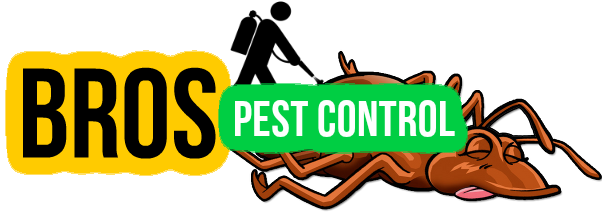Bee Removal St. Cloud, MN | Yellow Jackets, Wasps, Hornets
St. Cloud Bee Control & Extermination
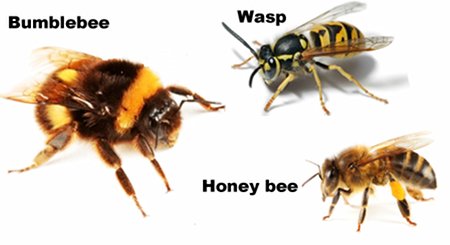 Bro’s Pest Control specializes in bee removal St. Cloud, MN. Bro’s Pest Control is your connection to safe bee removal and extermination services in the St. Cloud area. Exterminators within our network specialize in: wasp control, hornet control, bee swarm removal and bee removal. Pest control services can also include sealing off the entrances and exits, repairs from hive and damage, as well as traps. Bee’s can pose danger, especially if a loved one is allergic. Contact Bro’s Pest Control today to control your bee problem in the St. Cloud area.
Bro’s Pest Control specializes in bee removal St. Cloud, MN. Bro’s Pest Control is your connection to safe bee removal and extermination services in the St. Cloud area. Exterminators within our network specialize in: wasp control, hornet control, bee swarm removal and bee removal. Pest control services can also include sealing off the entrances and exits, repairs from hive and damage, as well as traps. Bee’s can pose danger, especially if a loved one is allergic. Contact Bro’s Pest Control today to control your bee problem in the St. Cloud area.
For Bee Control St. Cloud, Minnesota Call, 1-888-497-9069
Specialized Bee Removal & Extermination
Bro’s Pest Control professionals can help you with all different bee problems including:
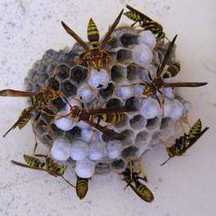 Removal of hives, bee swarm removal, yellow jacket removal, hornet removal, bumble bee removal and various of bee removal jobs. Bee removal St. Cloud, MN experts will come out to your home or business and remove unwanted bee’s safely and at a reasonable price. Same day appointments for bee removal can be scheduled, if needed. Ready for bee control St. Cloud, MN? Contact us today by calling 1-888-497-9069.
Removal of hives, bee swarm removal, yellow jacket removal, hornet removal, bumble bee removal and various of bee removal jobs. Bee removal St. Cloud, MN experts will come out to your home or business and remove unwanted bee’s safely and at a reasonable price. Same day appointments for bee removal can be scheduled, if needed. Ready for bee control St. Cloud, MN? Contact us today by calling 1-888-497-9069.
Bee, Wasp & Hornet Treatment
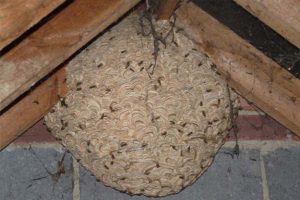 Bee, wasp or hornet treatment St. Cloud, MN will require one of our bee specialists to come out to your home to perform a free inspection. They will arrive fully equipped to eliminate your bee issue. The bee exterminator will identify the location of the nest, depending on the type of stinging insect problem you have, and eliminate/remove the problems to protect your family’s health and safety. In the case of a hornets nest, the technician will treat the nest and return to remove it after insuring that all the pests have been killed.
Bee, wasp or hornet treatment St. Cloud, MN will require one of our bee specialists to come out to your home to perform a free inspection. They will arrive fully equipped to eliminate your bee issue. The bee exterminator will identify the location of the nest, depending on the type of stinging insect problem you have, and eliminate/remove the problems to protect your family’s health and safety. In the case of a hornets nest, the technician will treat the nest and return to remove it after insuring that all the pests have been killed.
Bees are flying insects closely related to wasps and ants, known for their role in pollination and, in the case of the best-known bee species, the European honey bee, for producing honey and beeswax. For bee removal St. Cloud, MN — contact us today!
Bee Extermination St. Cloud, Minnesota
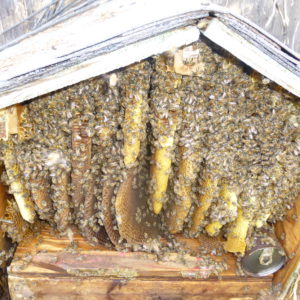 Assuming the bee's in question are not honeybee's, a Bro's Pest Control expert can exterminate them. Every year, beekeepers are called upon to give advice regarding the removal of honey bees (and other insect pests) from homes and buildings since honey bees are NOT to be exterminated. Honey Bee removal on the other hand, includes relocating the bee's to a different location. If you have a bumble bee, wasp or yellow jacket bee problem in St. Cloud, MN -- then extermination can be done. For wasp, bumble bee, hornet or yellow jacket extermination St. Cloud, MN -- please get in touch with Bro's Pest Control today!
Assuming the bee's in question are not honeybee's, a Bro's Pest Control expert can exterminate them. Every year, beekeepers are called upon to give advice regarding the removal of honey bees (and other insect pests) from homes and buildings since honey bees are NOT to be exterminated. Honey Bee removal on the other hand, includes relocating the bee's to a different location. If you have a bumble bee, wasp or yellow jacket bee problem in St. Cloud, MN -- then extermination can be done. For wasp, bumble bee, hornet or yellow jacket extermination St. Cloud, MN -- please get in touch with Bro's Pest Control today!
St. Cloud, Minnesota
St. Cloud /ˌseɪntˈklaʊd/ is a city in the state of Minnesota and the largest population center in the state's central region. Its population is 67,109 according to the 2015 US census estimates, making it Minnesota's tenth largest city.[6] St. Cloud is the county seat of Stearns County[7] and was named after the city of Saint-Cloud, France (in Île-de-France, near Paris), which was named after the 6th-century French monk Clodoald.
Though mostly in Stearns County, St. Cloud also extends into Benton and Sherburne counties, and straddles the Mississippi River. It is the center of a small, contiguous urban area totaling over 116,000 residents, with Waite Park, Sauk Rapids, Sartell, St. Joseph, Rockville, and St. Augusta directly bordering the city, and Foley, Rice, Kimball, Clearwater, Clear Lake, and Cold Spring nearby. With 189,093 residents at the 2010 census, the St. Cloud metropolitan area is the fourth-largest in Minnesota, behind Minneapolis–St. Paul, Duluth–Superior, and Rochester. (The population of Fargo-Moorhead is also larger than St. Cloud's, but most of that is in North Dakota, with only 58,999 residents in Minnesota.)
A wasp is any insect of the order Hymenoptera and suborder Apocrita that is neither a bee nor an ant. The Apocrita have a common evolutionary ancestor and form a clade; wasps as a group do not form a clade, but are paraphyletic with respect to bees and ants.
The most commonly known wasps, such as yellow jackets and hornets, are in the family Vespidae and are eusocial, living together in a nest with an egg-laying queen and non-reproducing workers. Eusociality is favoured by the unusual haplodiploid system of sex determination in Hymenoptera, as it makes sisters exceptionally closely related to each other. However, the majority of wasp species are solitary, with each adult female living and breeding independently. Many of the solitary wasps are parasitoidal, meaning that they raise their young by laying eggs on or in other insects (any life stage from egg to adult). Unlike true parasites, the wasp larvae eventually kill their hosts. Solitary wasps parasitize almost every pest insect, making wasps valuable in horticulture for biological pest control of species such as whitefly in tomatoes and other crops.
